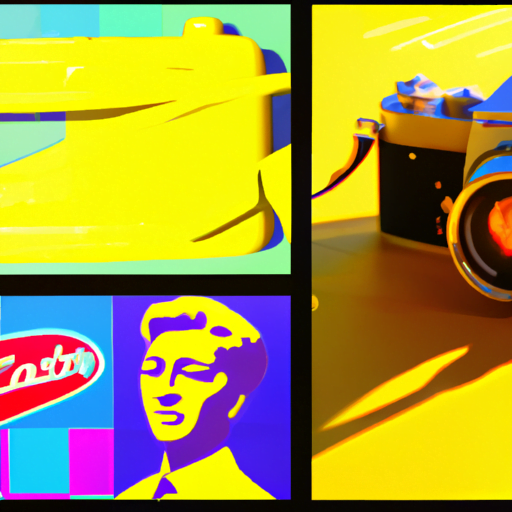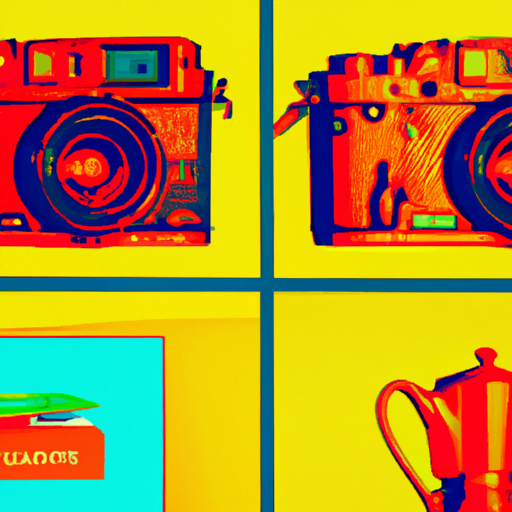
-
Table of Contents
Incorporating Gamification Elements in Graphic Design

Gamification has become a popular trend in various industries, from education to marketing. By incorporating game-like elements into different aspects of our lives, we can enhance engagement, motivation, and overall user experience. One area where gamification has shown great potential is graphic design. In this article, we will explore the benefits of incorporating gamification elements in graphic design and how it can revolutionize the field.
The Power of Gamification
Gamification is the process of applying game design principles and mechanics to non-game contexts. It taps into our innate desire for competition, achievement, and rewards, making tasks more enjoyable and motivating. By incorporating gamification elements into graphic design, designers can create more engaging and interactive experiences for their users.
According to a study conducted by the University of Colorado Denver, gamification can significantly increase user engagement and motivation. The study found that incorporating game-like elements in a learning environment increased student participation by 40% and improved test scores by 22%. These findings highlight the potential of gamification in enhancing user experiences and achieving desired outcomes.
Benefits of Gamification in Graphic Design
1. Increased User Engagement: Gamification elements, such as badges, leaderboards, and progress bars, can capture users’ attention and keep them engaged. By providing visual feedback and a sense of accomplishment, users are more likely to stay motivated and continue interacting with the design.
2. Enhanced Learning and Retention: Gamification can be a powerful tool for educational purposes. By incorporating interactive quizzes, challenges, and rewards, graphic designers can create a more immersive learning experience. This approach not only increases knowledge retention but also makes the learning process more enjoyable and memorable.
3. Improved User Experience: Gamification elements can make graphic designs more intuitive and user-friendly. For example, incorporating game-like tutorials and walkthroughs can guide users through complex interfaces, making them more accessible and less overwhelming. This approach can be particularly beneficial for applications and websites that require users to navigate through multiple features and functionalities.
4. Increased Motivation and Productivity: By incorporating gamification elements, designers can tap into users’ intrinsic motivation and drive. Elements such as levels, achievements, and rewards can create a sense of progress and accomplishment, encouraging users to continue engaging with the design. This increased motivation can also translate into improved productivity and goal achievement.
Examples of Gamification in Graphic Design
1. Duolingo: Duolingo is a language-learning platform that incorporates gamification elements to make the learning process more engaging. Users earn points, unlock achievements, and compete with friends, creating a sense of competition and motivation. This approach has made language learning more enjoyable and has attracted millions of users worldwide.
2. Nike+: Nike+ is a fitness app that uses gamification elements to motivate users to stay active. Users can set goals, track their progress, and earn badges for completing challenges. By incorporating game-like elements, Nike+ has successfully encouraged users to adopt healthier lifestyles and stay committed to their fitness goals.
3. Canva: Canva is a popular graphic design tool that incorporates gamification elements to make the design process more interactive. Users can earn badges, unlock new features, and participate in design challenges. These elements not only enhance user engagement but also provide a sense of achievement and progress as users improve their design skills.
Case Studies on Gamification in Graphic Design
1. Volkswagen’s “The Fun Theory”: Volkswagen launched a campaign called “The Fun Theory” to encourage people to adopt environmentally friendly behaviors. One of the campaign’s initiatives involved transforming a set of stairs into a giant piano keyboard. As people stepped on the stairs, they would produce musical notes, making the experience fun and engaging. The campaign successfully increased the number of people using the stairs instead of the escalator, promoting a healthier and more sustainable lifestyle.
2. Foldit: Foldit is an online puzzle game that allows players to fold proteins and contribute to scientific research. By turning protein folding into a game, Foldit has engaged thousands of players worldwide, leading to significant scientific discoveries. In one case, Foldit players solved the structure of an AIDS-related enzyme, a problem that had stumped scientists for over a decade. This case study demonstrates the power of gamification in harnessing collective intelligence and solving complex problems.
How to Incorporate Gamification Elements in Graphic Design
1. Define Objectives: Before incorporating gamification elements, it is essential to define clear objectives and desired outcomes. Whether it is increasing user engagement, improving learning outcomes, or enhancing user experience, having a clear goal will guide the design process and ensure the effective implementation of gamification elements.
2. Understand the Target Audience: To create a compelling gamified design, it is crucial to understand the target audience’s preferences, motivations, and behaviors. Conducting user research, surveys, and usability testing can provide valuable insights into what elements will resonate with the users and drive engagement.
3. Choose Appropriate Gamification Elements: There are various gamification elements that can be incorporated into graphic design, such as badges, leaderboards, progress bars, challenges, and rewards. It is important to choose elements that align with the objectives and preferences of the target audience. For example, if the goal is to enhance learning, incorporating quizzes and knowledge checkpoints can be effective.
4. Design for Progression and Feedback: One of the key aspects of gamification is providing users with a sense of progression and feedback. Designers should create clear visual cues, such as progress bars and levels, to show users their advancement. Additionally, providing immediate feedback and rewards for completing tasks or achieving milestones can further enhance user motivation and engagement.
Summary
Gamification has the potential to revolutionize the field of graphic design by enhancing user engagement, improving learning outcomes, and creating more intuitive user experiences. By incorporating game-like elements, designers can tap into users’ intrinsic motivation and drive, making tasks more enjoyable and rewarding. Examples such as Duolingo, Nike+, and Canva demonstrate the successful implementation of gamification in various contexts. Case studies, such as Volkswagen’s “The Fun Theory” and Foldit, further highlight the power of gamification in promoting positive behaviors and solving complex problems. To effectively incorporate gamification elements, designers should define clear objectives, understand the target audience, choose appropriate elements, and design for progression and feedback. By embracing gamification, graphic designers can create more engaging and impactful designs that captivate users and drive desired outcomes.
